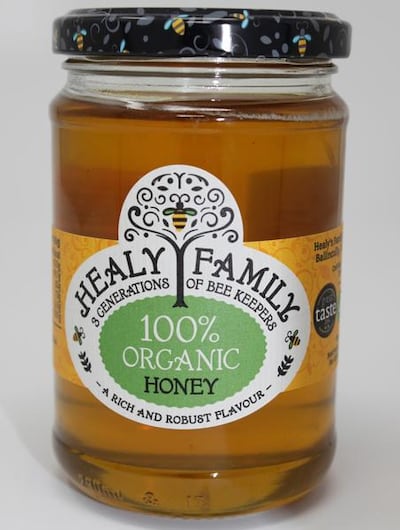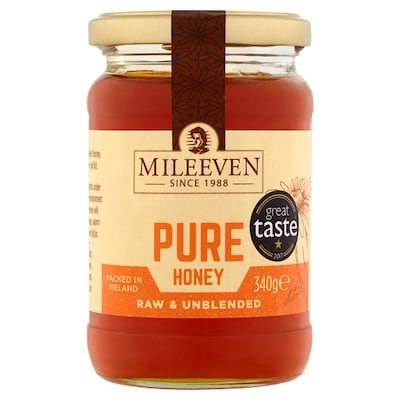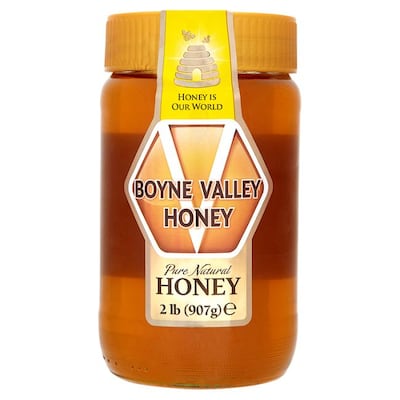While sugar has been demonised in recent years, honey is enjoying something of a resurgence in popularity. To some it is liquid gold. To others, including many dieticians, it is just another form of sugar.
One way to make up your mind is to check out the nutrition panels on the labels. Where 100g of white, granulated sugar is 99.8 per cent sugar, the same amount of honey has closer to 75-82 per cent sugar, depending on the brand. Both forms of sugar are made up of fructose and glucose, but at different ratios. What the labels don’t say are that honey also has water, vitamins and minerals. EU regulations don’t allow producers to heat honey to pasteurisation levels as this could destroy the natural enzymes. The type of trace elements will depend on what blooms the bees enjoyed and where the honey is from.
That’s not always obvious. Even though I have spent the past year examining labels, last week I picked up a jar of what I thought was Irish honey only to discover once I had it home that it was not. The jar of Healy Family 100 per cent organic honey declares on the front that it made by “three generations of bee keepers”. The address on the side says Healy’s Family Honey, Maglin, Ballincollig, Co Cork. It has two green Organic Trust symbols and the words certified organic.

So far, so good. Look closer though and it says “EU/non-EU agriculture” indicating the honey could have come from anywhere around the world.
On the side, it also says: “At Healy’s Family Honey we partner our own hives of honey bees with international apiary families to carefully blend selected honey from around the world.”
I’ve nothing against foreign bees, but I would rather know which particular country the honey is from. To be fair to Healys, using non-Irish honey is common practice. Most honey sold under the Boyne Valley brand is not from Louth or anywhere in Ireland unless you get a jar of its limited edition Irish Wildflower honey.
Honey blends
There are EU regulations to ensure the honey we buy is of acceptable quality and labelled appropriately. The regulations say that honey can be bought only from approved countries and that it must be labelled EU, non-EU or both. Hence many honey labels say “made from a blend of EU and non-EU honeys”, which means they might come from anywhere around the world.
The country of origin is often stamped on the side of the lid, however. One jar of “pure unblended organic honey” from Mileeven in Co Kilkenny is from Brazil; a similar jar of its non-organic honey is from Spain.

South America is a common source, especially of organic honey. British brand Rowse imports honeys from all over the world, including South America, Europe, Australia, New Zealand and Asia. Its stated aim is to produce a honey that is consistent in flavour, colour, aroma and texture all year round, which is what consumers expect. It also helps to make it one of the cheaper brands on sale in supermarkets.
There is a good reason for buying Irish, however, and not just economic. Irish heather honey has health benefits comparable with the expensive manuka honey transported in from New Zealand, according to a study released by researchers at Dublin City University and Trinity College Dublin last year. These benefits include antioxidant, antibacterial and anti-inflammatory properties. Irish honey generally costs more, but may be well worth it.
Best before
There are thousands of beekeepers in Ireland and Boyne Valley says last year’s long, hot summer produced one of the most bountiful supplies of Irish honey in years.

Healys, like other local apiarists, also sells Irish honey in jars that clearly state on the front their origins. Its Premium Irish honey is gathered from bees feeding on the “spring and summer blossoms in the sunny southeast of Ireland”.
Beside the country of origin, there is also usually a production date and a best before date. So, for example, the Mileeven honey was produced this year and is best before March 7th, 2021. Don’t let that put you off eating from an old jar though. Honey does not go off; giving it a best before date is simply a commercial requirement.
Don’t be put off either by the warning seen on jars not to give this sticky treat to babies. It simply means that honey may have spores of a bacteria that a baby’s digestive system cannot handle: Clostridium botulinum. Wait until the baby is at least a year old to start sharing the goodness.
FOOD LABELS SERIES
- Bread
- Soup
- Crisps
- Sliced ham
- Cream crackers
(search other food labels articles here)

















